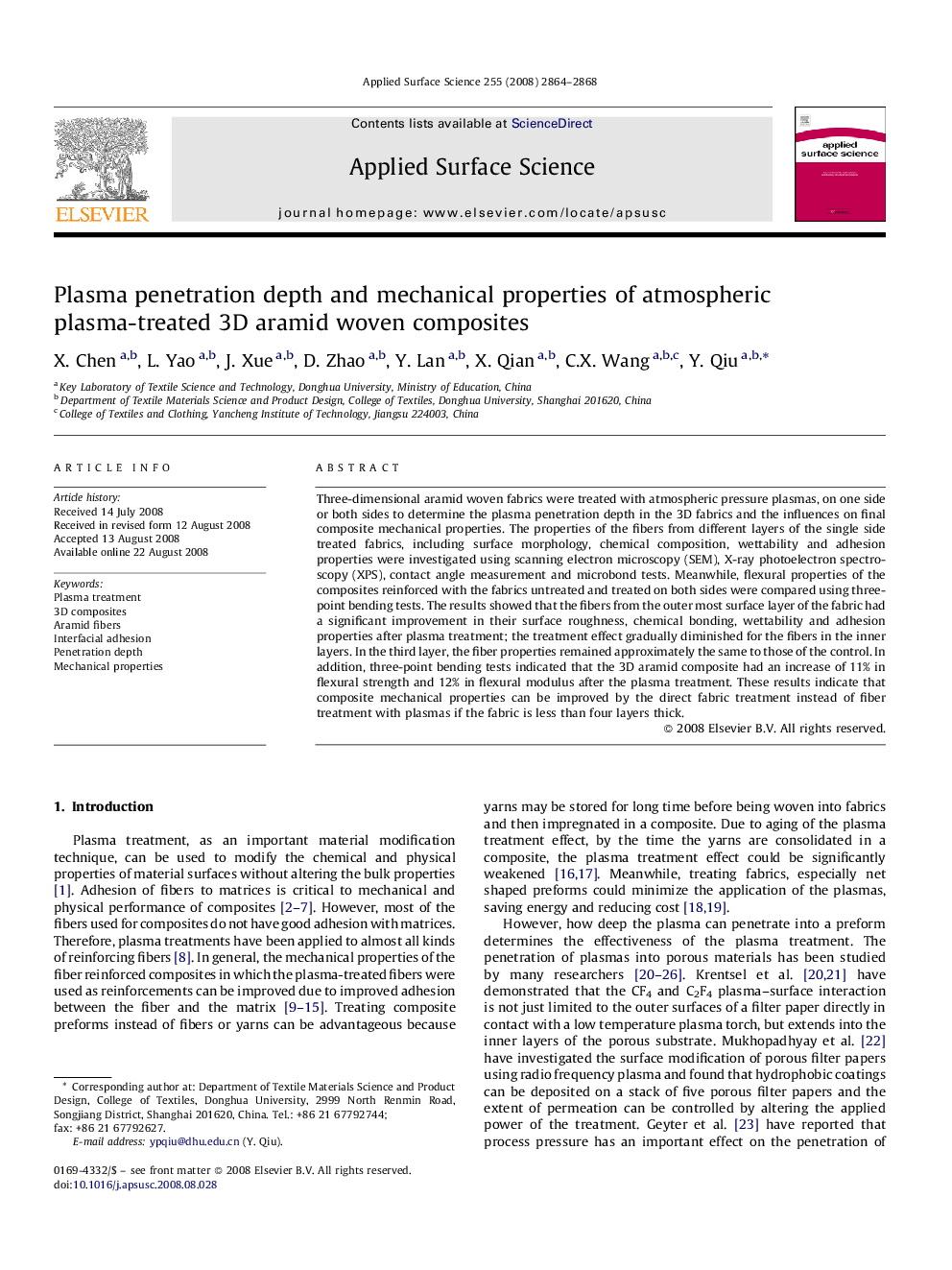| Article ID | Journal | Published Year | Pages | File Type |
|---|---|---|---|---|
| 5369361 | Applied Surface Science | 2008 | 5 Pages |
Three-dimensional aramid woven fabrics were treated with atmospheric pressure plasmas, on one side or both sides to determine the plasma penetration depth in the 3D fabrics and the influences on final composite mechanical properties. The properties of the fibers from different layers of the single side treated fabrics, including surface morphology, chemical composition, wettability and adhesion properties were investigated using scanning electron microscopy (SEM), X-ray photoelectron spectroscopy (XPS), contact angle measurement and microbond tests. Meanwhile, flexural properties of the composites reinforced with the fabrics untreated and treated on both sides were compared using three-point bending tests. The results showed that the fibers from the outer most surface layer of the fabric had a significant improvement in their surface roughness, chemical bonding, wettability and adhesion properties after plasma treatment; the treatment effect gradually diminished for the fibers in the inner layers. In the third layer, the fiber properties remained approximately the same to those of the control. In addition, three-point bending tests indicated that the 3D aramid composite had an increase of 11% in flexural strength and 12% in flexural modulus after the plasma treatment. These results indicate that composite mechanical properties can be improved by the direct fabric treatment instead of fiber treatment with plasmas if the fabric is less than four layers thick.
